
| Version | Summary | Created by | Modification | Content Size | Created at | Operation |
|---|---|---|---|---|---|---|
| 1 | Dean Liu | -- | 3071 | 2022-11-14 01:41:44 |
Video Upload Options
Venus, as one of the brightest objects in the sky, has been known since prehistoric times and has been a major fixture in human culture for as long as records have existed. As such, it has a prominent position in human culture, religion, and myth. It has been made sacred to gods of many cultures, and has been a prime inspiration for writers and poets as the morning star and evening star.
1. Background and Name
What is now known as the planet Venus has long been an object of fascination for cultures worldwide. It is the second brightest object in the night sky, and follows a synodic cycle by which it seems to disappear for several days due to its proximity to the Sun, then re-appear on the opposite side of the Sun and on the other horizon. Depending on the point in its cycle, Venus may appear before sunrise in the morning, or after sunset in the evening, but it never appears to reach the apex of the sky. Therefore, many cultures have recognized it with two names, even if their astronomers realized that it was really one object.[1]
In old English, the planet was known as morgensteorra (morning star) and æfensteorra (evening star). It was not until the 13th century C.E. that the name "Venus" was adopted for the planet[2] (in classical Latin, though the morning star was considered sacred to the goddess Venus, it was called Lucifer).[3]
In Chinese the planet is called Jīn-xīng (金星), the golden planet of the metal element. It is known as "Kejora" in Indonesian and Malay. Modern Chinese, Japanese and Korean cultures refer to the planet literally as the "metal star" (金星), based on the Five elements.[4][5][6]
2. Ancient Near-East
2.1. Mesopotamia
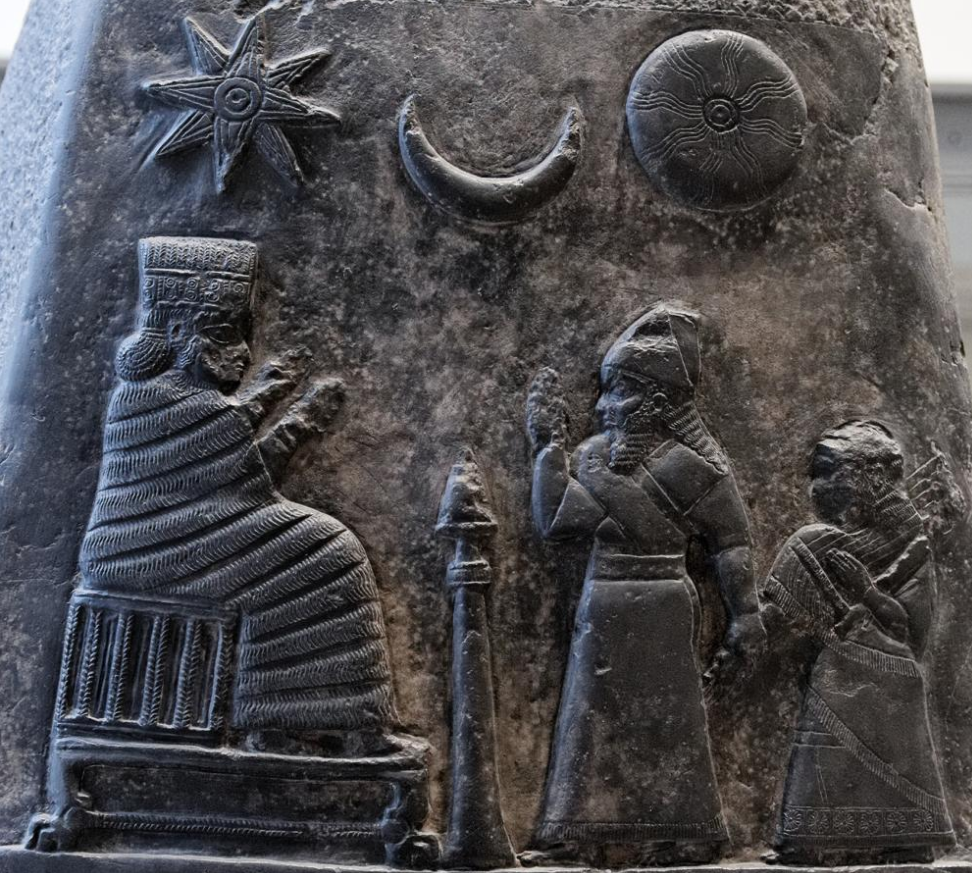
Because the movements of Venus appear to be discontinuous (it disappears due to its proximity to the Sun, for many days at a time, and then reappears on the other horizon), some cultures did not recognize Venus as single entity; instead, they assumed it to be two separate stars on each horizon: the morning and evening star. Nonetheless, a cylinder seal from the Jemdet Nasr period indicates that the ancient Sumerians already knew that the morning and evening stars were the same celestial object. The Sumerians associated the planet with the goddess Inanna, who was known as Ishtar by the later Akkadians and Babylonians.[7] She had a dual role as a goddess of both love and war, thereby representing a deity that presided over birth and death.[8][9]
The discontinuous movements of Venus relate to both Inanna's mythology as well as her dual nature.[7][10][11] Inanna's actions in several of her myths, including Inanna and Shukaletuda and Inanna's Descent into the Underworld appear to parallel the motion of the planet Venus as it progresses through its synodic cycle. For example, in Inanna's Descent to the Underworld, Inanna is able to descend into the netherworld, where she is killed, and then resurrected three days later to return to the heavens. An interpretation of this myth by Clyde Hostetter holds that it is an allegory for the movements of the planet Venus, beginning with the spring equinox and concluding with a meteor shower near the end of one synodic period of Venus. The three-day disappearance of Inanna refers to the three-day planetary disappearance of Venus between its appearance as a morning and evening star.[12] An introductory hymn to this myth describes Inanna leaving the heavens and heading for Kur, what could be presumed to be the mountains, replicating the rising and setting of Inanna to the West. In the myth Inanna and Shukaletuda, Shukaletuda is described as scanning the heavens in search of Inanna, possibly searching the eastern and western horizons. In the same myth, while searching for her attacker, Inanna herself makes several movements that correspond with the movements of Venus in the sky.[7] Inanna-Ishtar's most common symbol was the eight-pointed star.[13] The eight-pointed star seems to have originally borne a general association with the heavens, but, by the Old Babylonian Period (c. 1830 – c. 1531 BC), it had come to be specifically associated with the planet Venus, with which Ishtar was identified.[13]
In the Old Babylonian period, the planet Venus was known as Ninsi'anna, and later as Dilbat.[14] " Ninsi'anna" translates to "divine lady, illumination of heaven", which refers to Venus as the brightest visible "star". Earlier spellings of the name were written with the cuneiform sign si4 (= SU, meaning "to be red"), and the original meaning may have been "divine lady of the redness of heaven", in reference to the color of the morning and evening sky.[15] Venus is described in Babylonian cuneiform texts such as the Venus tablet of Ammisaduqa, which relates observations that possibly date from 1600 BC.[16]
2.2. Canaanite Mythology
In ancient Canaanite religion, the morning star is personified as the god Attar, a masculine variant of the name of the Babylonian goddess Ishtar.[17] In myth, Attar attempted to occupy the throne of Ba'al and, finding he was unable to do so, descended and ruled the underworld.[18][19] The original myth may have been about a lesser god, Helel, trying to dethrone the Canaanite high god El, who was believed to live on a mountain to the north.[20][21] Hermann Gunkel's reconstruction of the myth told of a mighty warrior called Hêlal, whose ambition was to ascend higher than all the other stellar divinities, but who had to descend to the depths. It thus portrayed as a battle the process by which the bright morning star fails to reach the highest point in the sky before being faded out by the rising sun.[22]
Similarities have been noted with the story of Inanna's descent into the underworld,[21] Ishtar and Inanna being associated with the planet Venus.[23] A connection has been seen also with the Babylonian myth of Etana. The Jewish Encyclopedia comments:
-
- "The brilliancy of the morning star, which eclipses all other stars, but is not seen during the night, may easily have given rise to a myth such as was told of Ethana and Zu: he was led by his pride to strive for the highest seat among the star-gods on the northern mountain of the gods ... but was hurled down by the supreme ruler of the Babylonian Olympus."[24]
In the Hebrew language Book of Isaiah, chapter 14, the King of Babylon is condemned using imagery derived from Canaanite myth, and is called הֵילֵל בֶּן-שָׁחַר (Helel ben Shachar, Hebrew for "shining one, son of the morning").[25][26][27][28][29][30] The title "Helel ben Shahar" may refer to the planet Venus as the morning star.[31] The Hebrew word transliterated as Hêlêl[32] or Heylel (pron. as Hay-LALE),[33] occurs only once in the Hebrew Bible.[32] The Septuagint renders הֵילֵל in Greek as Ἑωσφόρος [34][35][36][37][38] (heōsphoros),[39][40][41] "bringer of dawn", the Ancient Greek name for the morning star.[42] According to the King James Bible-based Strong's Concordance, the original Hebrew word means "shining one, light-bearer", and the translation given in the King James text is the Latin name for the planet Venus, "Lucifer".[33] However, the translation of הֵילֵל with the name "Lucifer" has been abandoned in modern English translations of Isaiah 14:12. In a modern translation from the original Hebrew, the passage in which the name Helel ben Shahar occurs begins with the statement: "On the day the Lord gives you relief from your suffering and turmoil and from the harsh labour forced on you, you will take up this taunt against the king of Babylon: How the oppressor has come to an end! How his fury has ended!"[43] After describing the death of the king, the taunt continues:
-
- "How you have fallen from heaven, morning star, son of the dawn! You have been cast down to the earth, you who once laid low the nations! You said in your heart, 'I will ascend to the heavens; I will raise my throne above the stars of God; I will sit enthroned on the mount of assembly, on the utmost heights of Mount Zaphon. I will ascend above the tops of the clouds; I will make myself like the Most High.' But you are brought down to the realm of the dead, to the depths of the pit. Those who see you stare at you, they ponder your fate: 'Is this the man who shook the earth and made kingdoms tremble, the man who made the world a wilderness, who overthrew its cities and would not let his captives go home?'"[44]
This passage was the origin of the later belief that Satan was a fallen angel, who could also be referred to as "Lucifer". However, it originally referred to the rise and disappearance of the morning star as an allegory for the fall of a once-proud king. This allegorical understanding of Isaiah seems to be the most accepted interpretation in the New Testament, as well as among early Christians such as Origen, Eusebius, Tertullian, and Gregory the Great. The fallen angel motif may therefore be considered a Christian "remythologization" of Isaiah 14, returning its allegorical imagery of the hubris of a historical ruler to the original roots of the Canaanite myth of a lesser god trying and failing to claim the throne of the heavens, who is then cast down to the underworld.[45]
2.3. Egypt
The Ancient Egyptians believed Venus to be two separate bodies and knew the morning star as Tioumoutiri and the evening star as Ouaiti.[46]
3. Hinduism
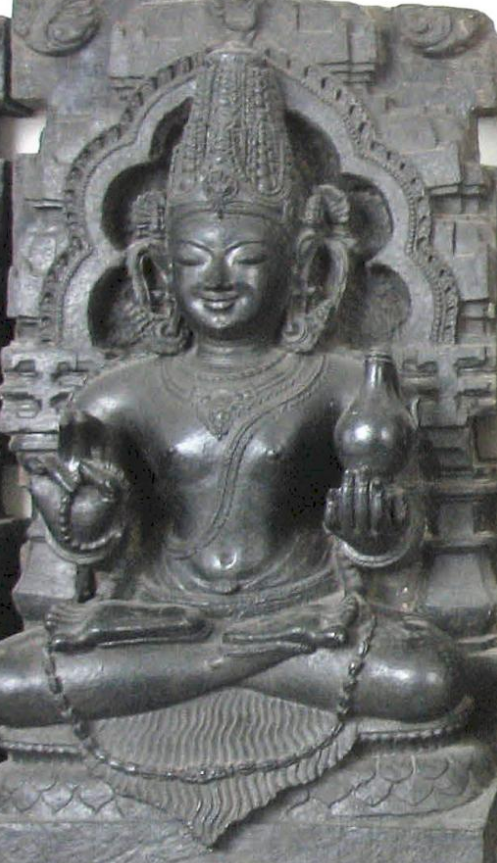
In India Shukra Graha ("the planet Shukra") which is named after a powerful saint Shukra. Shukra which is used in Indian Vedic astrology[47] means "clear, pure" or "brightness, clearness" in Sanskrit. One of the nine Navagraha, it is held to affect wealth, pleasure and reproduction; it was the son of Bhrgu, preceptor of the Daityas, and guru of the Asuras.[48] The word Shukra is also associated with semen, or generation.
4. Persia
In Iranian mythology, especially in Persian mythology, the planet usually corresponds to the goddess Anahita. In some parts of Pahlavi literature the deities Aredvi Sura and Anahita are regarded as separate entities, the first one as a personification of the mythical river and the latter as a goddess of fertility, which is associated with the planet Venus. As the goddess Aredvi Sura Anahita—and simply called Anahita as well—both deities are unified in other descriptions, e. g. in the Greater Bundahishn, and are represented by the planet. In the Avestan text Mehr Yasht (Yasht 10) there is a possible early link to Mithra. The Persian name of the planet today is "Nahid", which derives from Anahita and later in history from the Pahlavi language Anahid.[49][50][51][52]
5. Islam
In Islamic traditions the morning star is called Zohra or Zohrah and commonly related to a "beautiful woman".[53] According to myth, of which an echo is found in a play by the 17th-century English poet William Percy, two angels, Harut and Marut, descended to earth and were seduced by Zohra's beauty to commit shirk, murder, adultery and drinking wine. In their drunken state, Zohra elicited from these angels the secret words to ascend to heaven. When she spoke the secret words, she elevated herself to the first heaven, but was imprisoned there (i.e. transformed into the planet Venus).[54]
6. Ancient Greece and Rome
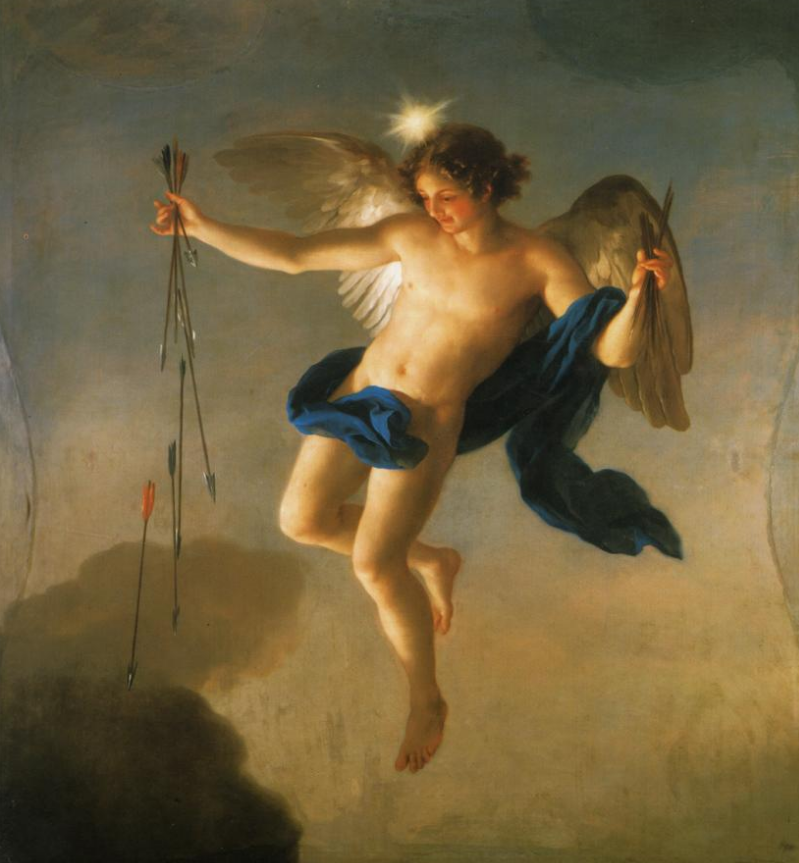
The Ancient Greeks called the morning star Φωσφόρος, Phosphoros, the "Bringer of Light". Another Greek name for the morning star was Heosphoros (Greek Ἑωσφόρος Heōsphoros), meaning "Dawn-Bringer".[55] They called the evening star, which was long considered a separate celestial object, Hesperos (Ἓσπερος, the "star of the evening").[56] By Hellenistic times, the ancient Greeks had identified these as a single planet,[57][58] though the traditional use of two names for its appearance in the morning and the evening continued even into the Roman period.
The Greek myth of Phaethon, whose name means "Shining One", has also been seen as similar to those of other gods who cyclically descend from the heavens, like Inanna and Attar.[22]
In classical mythology, Lucifer ("light-bringer" in Latin) was the name of the planet Venus as the morning star (as the evening star it was called Vesper), and it was often personified as a male figure bearing a torch. Lucifer was said to be "the fabled son of Aurora[3] and Cephalus, and father of Ceyx". He was often presented in poetry as heralding the dawn.[59]
The Romans considered the planet Lucifer particularly sacred to the goddess Venus, whose name eventually became the scientific name for the planet. The second century Roman mythographer Pseudo-Hyginus said of the planet:[60]
- "The fourth star is that of Venus, Luciferus by name. Some say it is Juno's. In many tales it is recorded that it is called Hesperus, too. It seems to be the largest of all stars. Some have said it represents the son of Aurora and Cephalus, who surpassed many in beauty, so that he even vied with Venus, and, as Eratosthenes says, for this reason it is called the star of Venus. It is visible both at dawn and sunset, and so properly has been called both Luciferus and Hesperus."
Ovid, in his first century epic Metamorphoses, describes Lucifer as ordering the heavens:[61]
- "Aurora, watchful in the reddening dawn, threw wide her crimson doors and rose-filled halls; the Stellae took flight, in marshaled order set by Lucifer who left his station last."
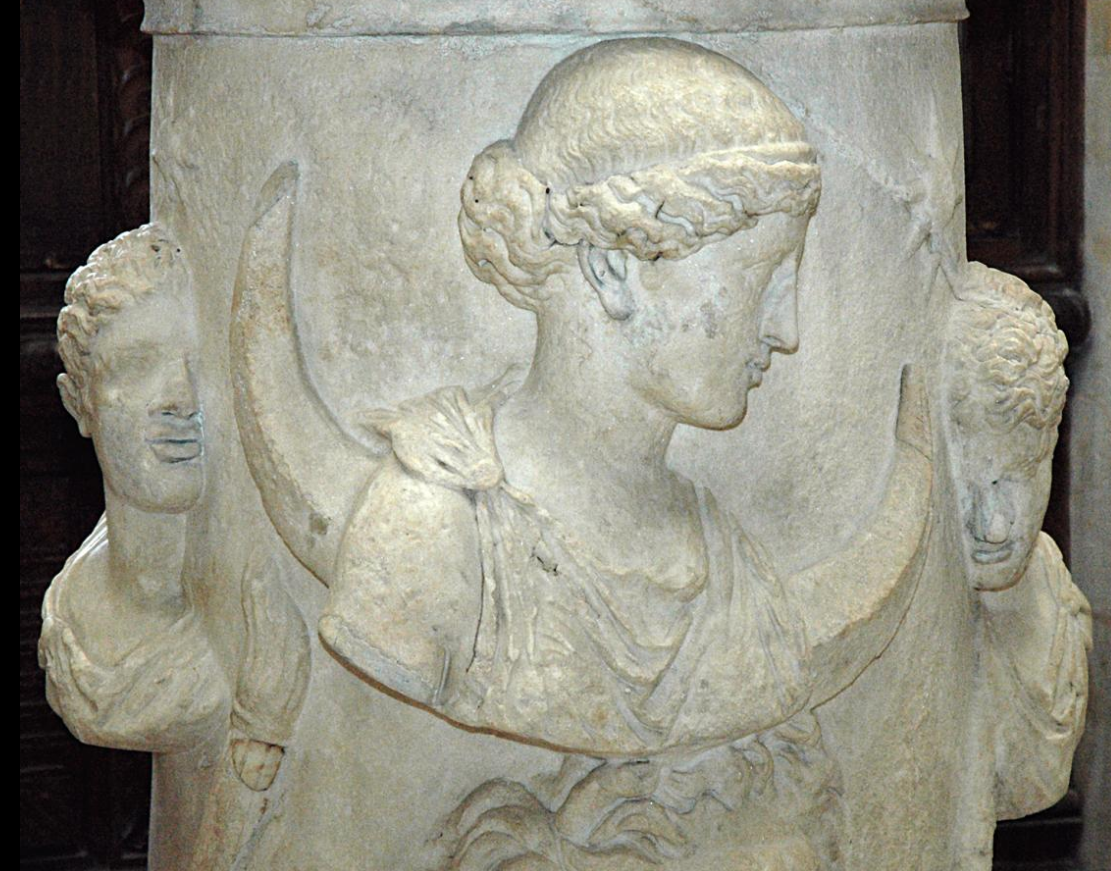
In the classical Roman period, Lucifer was not typically regarded as a deity and had few, if any, myths,[59] though the planet was associated with various deities and often poetically personified. Cicero pointed out that "You say that Sol the Sun and Luna the Moon are deities, and the Greeks identify the former with Apollo and the latter with Diana. But if Luna (the Moon) is a goddess, then Lucifer (the Morning-Star) also and the rest of the Wandering Stars (Stellae Errantes) will have to be counted gods; and if so, then the Fixed Stars (Stellae Inerrantes) as well."[62]
7. Maya
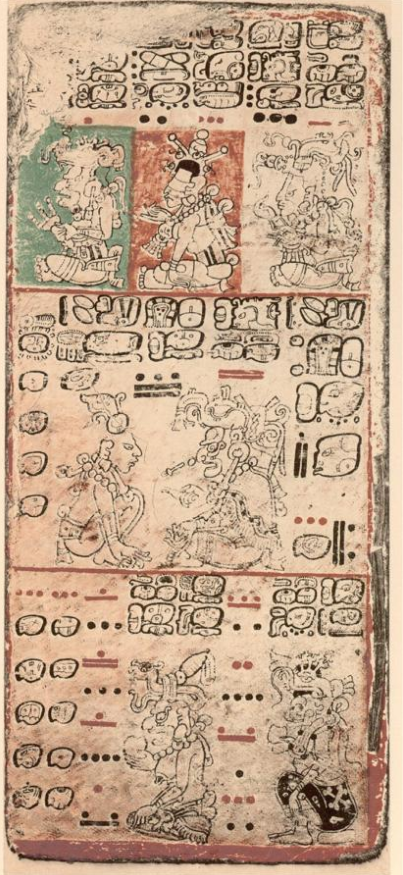
Venus was considered the most important celestial body observed by the Maya, who called it Chac ek,[63] or Noh Ek', "the Great Star". The Maya monitored the movements of Venus closely and observed it in daytime. The positions of Venus and other planets were thought to influence life on Earth, so the Maya and other ancient Mesoamerican cultures timed wars and other important events based on their observations. In the Dresden Codex, the Maya included an almanac showing Venus's full cycle, in five sets of 584 days each (approximately eight years), after which the patterns repeated (since Venus has a synodic period of 583.92 days).[64]
The Maya civilization developed a religious calendar, based in part upon the motions of the planet, and held the motions of Venus to determine the propitious time for events such as war. They also named it Xux Ek', the Wasp Star. The Maya were aware of the planet's synodic period, and could compute it to within a hundredth part of a day.[65]
8. Other Cultures
The Maasai people named the planet Kileken, and have an oral tradition about it called The Orphan Boy.[66]
Venus is important in many Australian aboriginal cultures, such as that of the Yolngu people in Northern Australia. The Yolngu gather after sunset to await the rising of Venus, which they call Barnumbirr. As she approaches, in the early hours before dawn, she draws behind her a rope of light attached to the Earth, and along this rope, with the aid of a richly decorated "Morning Star Pole", the people are able to communicate with their dead loved ones, showing that they still love and remember them. Barnumbirr is also an important creator-spirit in the Dreaming, and "sang" much of the country into life.[67]
Venus plays a prominent role in Pawnee mythology. The Pawnee, a North American native tribe, until as late as 1838, practiced a morning star ritual in which a girl was sacrificed to the morning star.[68]
In western astrology, derived from its historical connotation with goddesses of femininity and love, Venus is held to influence desire and sexual fertility.[69]
In the metaphysical system of Theosophy, it is believed that on the etheric plane of Venus there is a civilization that existed hundreds of millions of years before Earth's[70] and it is also believed that the governing deity of Earth, Sanat Kumara, is from Venus.[71]
9. In Literature
The discovery in the modern era that Venus was a distant world covered in impenetrable cloud cover gave science fiction writers free rein to speculate on conditions at its surface; all the more so when early observations showed that not only was it similar in size to Earth, it possessed a substantial atmosphere. Closer to the Sun than Earth, the planet was frequently depicted as warmer, but still habitable by humans.[72] The genre reached its peak between the 1930s and 1950s, at a time when science had revealed some aspects of Venus, but not yet the harsh reality of its surface conditions. Findings from the first missions to Venus showed the reality to be quite different, and brought this particular genre to an end.[73] As scientific knowledge of Venus advanced, so science fiction authors tried to keep pace, particularly by conjecturing human attempts to terraform Venus.[74]
Another appearance of Venus in popular culture is as the harbinger of destruction in Immanuel Velikovsky's Worlds in Collision (1950). In this controversial book, Velikovsky argued that many seemingly unbelievable stories in the Old Testament are true recollections of times when Venus, which Velikovsky claimed had somehow been ejected from Jupiter as a comet, nearly collided with the Earth. He contended that Venus caused most of the strange events of the Exodus story. He cites legends in many other cultures (including the Greek, Mexican, Chinese and Indian) indicating that the effects of the near-collision were global. The scientific community rejected his unorthodox book, but it became a bestseller.[75]
References
- Evans, James (1998). The History and Practice of Ancient Astronomy. Oxford University Press. pp. 296–7. ISBN 978-0-19-509539-5. https://books.google.com/?id=nS51_7qbEWsC&pg=PA17. Retrieved 4 February 2008.
- [1]
- Auffarth, Christoph; Stuckenbruck, Loren T., eds (2004). The Fall of the Angels. Leiden: BRILL. p. 62. ISBN 978-9-00412668-8. https://books.google.com/books?id=lhNyGFkT3QYC&printsec=frontcover.
- De Groot, Jan Jakob Maria (1912). Religion in China: universism. a key to the study of Taoism and Confucianism. 10. G. P. Putnam's Sons. p. 300. https://books.google.com/books?id=ZAaP7dyjCrAC&pg=PA300. Retrieved 2010-01-08.
- Crump, Thomas (1992). The Japanese numbers game: the use and understanding of numbers in modern Japan. Routledge. pp. 39–40. ISBN 0415056098.
- Hulbert, Homer Bezaleel (1909). The passing of Korea. Doubleday, Page & company. p. 426. https://books.google.com/books?id=fxwpAAAAYAAJ&pg=PA426. Retrieved 2010-01-08.
- Cooley, Jeffrey L. (2008). "Inana and Šukaletuda: A Sumerian Astral Myth". KASKAL 5: 161–172. ISSN 1971-8608. https://www.academia.edu/1247599/Inana_and_Sukaletuda_A_Sumerian_Astral_Myth.
- Meador, Betty De Shong (2000). Inanna, Lady of Largest Heart: Poems of the Sumerian High Priestess Enheduanna. University of Texas Press. p. 15. ISBN 0-292-75242-3.
- Littleton, C. Scott (2005). Gods, Goddesses, and Mythology. 6. Marshall Cavendish. p. 760. ISBN 0761475656. https://books.google.com/books?id=u27FpnXoyJQC&pg=PA760.
- Black, Jeremy; Green, Anthony (1992). Gods, Demons and Symbols of Ancient Mesopotamia: An Illustrated Dictionary. The British Museum Press. pp. 108–109. ISBN 0-7141-1705-6. https://books.google.com/books?id=05LXAAAAMAAJ&focus=searchwithinvolume&q=Inana.
- Nemet-Nejat, Karen Rhea (1998), Daily Life in Ancient Mesopotamia, Daily Life, Greenwood, p. 203, ISBN 978-0313294976
- Hostetter, Clyde (1991), Star Trek to Hawa-i'i, San Luis Obispo, California: Diamond Press, p. 53
- null
- Enn Kasak, Raul Veede. Understanding Planets in Ancient Mesopotamia. Folklore Vol. 16. Mare Kõiva & Andres Kuperjanov, Eds. ISSN 1406-0957
- Heimpel, W. 1982. "A catalog of Near Eastern Venus deities." Syro-Mesopotamian Studies 4/3: 9-22.
- Sachs, A. (1974). "Babylonian Observational Astronomy". Philosophical Transactions of the Royal Society of London 276 (1257): 43–50. doi:10.1098/rsta.1974.0008. Bibcode: 1974RSPTA.276...43S. https://dx.doi.org/10.1098%2Frsta.1974.0008
- Julian Baldick (1998). Black God. Syracuse University Press. p. 20. ISBN 0815605226. https://books.google.com/books?isbn=0815605226.
- John Day, Yahweh and the gods and goddesses of Canaan (Continuum International Publishing Group, 2002. ISBN:0-82646830-6. ISBN:978-0-8264-6830-7), pp. 172–173 https://books.google.com/books?id=y-gfwlltlRwC
- Gregory A. Boyd, God at War: The Bible & Spiritual Conflict (InterVarsity Press, 1997 ISBN:0-8308-1885-5. ISBN:978-0-8308-1885-3), pp. 159–160 https://books.google.com/books?id=Hj791_BeAF0C
- Marvin H. Pope, ''El in the Ugaritic Texts''. https://books.google.com/books?id=ns4UAAAAIAAJ&printsec=frontcover&dq=Pope+%22El+in+the+Ugaritic+texts%22. Retrieved 22 December 2012.
- Gary V. Smith (30 August 2007). Isaiah 1–30. B&H Publishing Group. pp. 314–315. ISBN 978-0-80540115-8. https://books.google.com/books?id=cLN08jf_C2EC&pg=PA314&dq=%22several+attempts+to+find+mythical+allusions%22. Retrieved 23 December 2012.
- Gunkel, Hermann (2006) [Originally published in German in 1895]. "Isa 14:12–14 (pp. 89ff.)". Creation And Chaos in the Primeval Era And the Eschaton. A Religio-historical Study of Genesis 1 and Revelation 12. Contributor Heinrich Zimmern, foreword by Peter Machinist, translated by K. William Whitney Jr.. Grand Rapids, Michigan: Wm. B. Eerdmans Publishing. ISBN 978-0-8028-2804-0. https://books.google.com/books?id=pNstLQ8i3nsC&pg=PA89&dq=%22Isa+14:12-14%22. page 90: "it is even more definitely certain that we are dealing with a native myth!"
- Marvin Alan Sweeney (1996). Isaiah 1–39. Eerdmans. p. 238. ISBN 978-0-80284100-1. https://books.google.com/books?id=BdSzj9-SZv0C&pg=PA238&dq=%22identified+with+the+morning+star%22. Retrieved 23 December 2012.
- "Lucifer". Jewish Encyclopedia. http://www.jewishencyclopedia.com/articles/10177-lucifer. Retrieved 9 September 2013.
- James D. G. Dunn; John William Rogerson (2003). Eerdmans Commentary on the Bible. Eerdmans. p. 511. ISBN 978-0-80283711-0. https://books.google.com/books?id=2Vo-11umIZQC&pg=PA511&dq=%22any+Canaanite+myth%22. Retrieved 23 December 2012.
- "Isaiah 14 Biblos Interlinear Bible". Interlinearbible.org. http://interlinearbible.org/isaiah/14-12.htm. Retrieved 22 December 2012.
- "Isaiah 14 Hebrew OT: Westminster Leningrad Codex". Wlc.hebrewtanakh.com. http://wlc.hebrewtanakh.com/isaiah/14.htm. Retrieved 22 December 2012.
- "ASTRONOMY – Helel, Son of the Morning.". The unedited full-text of the 1906 Jewish Encyclopedia. JewishEncyclopedia.com. http://www.jewishencyclopedia.com/articles/2052-astronomy. Retrieved 1 July 2012.
- "ASTRONOMY – Helel Son of the Morning". The unedited full-text of the 1906 Jewish Encyclopedia. JewishEncyclopedia.com. http://www.jewishencyclopedia.com/articles/2052-astronomy. Retrieved 1 July 2012.
- Wilken, Robert (2007). Isaiah: Interpreted by Early Christian and Medieval Commentators. Grand Rapids MI: Wm Eerdmans Publishing. pp. 171. ISBN 978-0-8028-2581-0.
- Gunkel, "Schöpfung und Chaos," pp. 132 et seq.
- "Hebrew Concordance: hê·lêl – 1 Occurrence – Bible Suite". Bible Hub. Leesburg, Florida: Biblos.com. http://biblesuite.com/hebrew/heilel_1966.htm. Retrieved 8 September 2013.
- Strong's Concordance, H1966 http://www.blueletterbible.org/lang/lexicon/lexicon.cfm?Strongs=H1966&t=KJV
- "LXX Isaiah 14" (in Greek). Septuagint.org. http://www.septuagint.org/LXX/Isaiah/14. Retrieved 22 December 2012.
- "Greek OT (Septuagint/LXX): Isaiah 14" (in Greek). Bibledatabase.net. http://bibledatabase.net/html/septuagint/23_014.htm. Retrieved 22 December 2012.
- "LXX Isaiah 14" (in Greek). Biblos.com. http://sepd.biblos.com/isaiah/14.htm. Retrieved 6 May 2013.
- "Septuagint Isaiah 14" (in Greek). Sacred Texts. http://www.sacred-texts.com/bib/sep/isa014.htm#012. Retrieved 6 May 2013.
- "Greek Septuagint (LXX) Isaiah – Chapter 14" (in Greek). Blue Letter Bible. http://www.blueletterbible.org/Bible.cfm?b=Isaiah&c=14&t=LXX. Retrieved 6 May 2013.
- Neil Forsyth (1989). The Old Enemy: Satan and the Combat Myth. Princeton University Press. p. 136. ISBN 978-0-69101474-6. https://books.google.com/?id=4W5gzptzfxUC&pg=136&dq=heosphoros+septuagint. Retrieved 22 December 2012.
- Nwaocha Ogechukwu Friday (30 May 2012). The Devil: What Does He Look Like?. American Book Publishing. p. 35. ISBN 978-1-58982662-5. https://books.google.com/?id=SD6-YKBqGr0C&pg=PA35&dq=heosphoros+septuagint. Retrieved 22 December 2012.
- Adelman, Rachel (2009). The Return of the Repressed: Pirqe De-Rabbi Eliezer and the Pseudepigrapha. Leiden: BRILL. p. 67. ISBN 978-9-00417049-0. https://books.google.com/books?id=Z7Ue5kAkw20C&printsec=frontcover.
- Taylor, Bernard A.; with word definitions by J. Lust; Eynikel, E.; Hauspie, K. (2009). Analytical lexicon to the Septuagint (Expanded ed.). Peabody, Mass.: Hendrickson Publishers, Inc.. p. 256. ISBN 1-56563516-7. https://books.google.com/books?id=JNaDupoSycMC&pg=256&dq=ἑωσφόρος.
- Isaiah 14:3–4 https://www.biblica.com/bible/?osis=niv:Isaiah.14:3–14:4
- Isaiah 14:12–17 https://www.biblica.com/bible/?osis=niv:Isaiah.14:12–14:17
- Day, John (2002). Yahweh and the gods and goddesses of Canaan. London: Sheffield Academic Press. ISBN 9780567537836.
- Cattermole, Peter John; Moore, Patrick (1997). Atlas of Venus. Cambridge University Press. p. 9. ISBN 0-521-49652-7.
- Bhalla, Prem P. (2006). Hindu Rites, Rituals, Customs and Traditions: A to Z on the Hindu Way of Life. Pustak Mahal. p. 29. ISBN 81-223-0902-X.
- Behari, Bepin; Frawley, David (2003). Myths & Symbols of Vedic Astrology (2nd ed.). Lotus Press. pp. 65–74. ISBN 0-940985-51-9.
- "Error: no |title= specified when using {{Cite web}}". Encyclopaedia Iranica. Center for Iranian Studies, Columbia University. Archived from the original on 1 May 2008. https://web.archive.org/web/20080501175915/http://www.iranica.com/newsite. Retrieved 2010-02-20.
- Schmidt, Hanns-Peter. "MITHRA". Encyclopaedia Iranica. Center for Iranian Studies, Columbia University. Archived from the original on 12 July 2008. https://web.archive.org/web/20080712124138/http://www.iranica.com/newsite/. Retrieved 2010-02-20.
- MacKenzie, D. N. (2005). A concise Pahlavi Dictionary. London & New York: Routledge Curzon. ISBN 0-19-713559-5.
- A Persian Dictionary. Six Volumes. 5–6. Tehran: Amir Kabir Publications. 1992. ISBN 1-56859-031-8.
- Muhammad Asad The Road To Mecca The Book Foundation 1954 ISBN:978-0-992-79810-9
- Matthew Dimmock (editor), William Percy's Mahomet and His Heaven: A Critical Edition Ashgate Publishing 2006 ISBN:978-0-754-65406-3 page 18 https://books.google.com/books?id=Wn7FOrsOOkcC&pg=PA18&lpg=PA18&dq=William+Percy+Harut+Marut&source=bl&ots=Bn6KlmdcaV&sig=5hoz8XRhdycPENgwphofVr_HBDs&hl=en&sa=X&ved=2ahUKEwiv7eH-_7DeAhUL-qQKHeVtAtoQ6AEwAHoECAgQAQ#v=onepage&q=William%20Percy%20Harut%20Marut&f=false
- null
- "Definition of Hesperus". www.thefreedictionary.com. http://www.thefreedictionary.com/Hesperus. Retrieved 12 May 2013.
- Fox, William Sherwood (1916). The Mythology of All Races: Greek and Roman. Marshall Jones Company. p. 247. ISBN 0-8154-0073-X. https://books.google.com/books?id=lEUTAAAAYAAJ. Retrieved 2009-05-16.
- Greene, Ellen (1996). Reading Sappho: contemporary approaches. University of California Press. p. 54. ISBN 0-520-20601-0.
- "Lucifer" in Encyclopaedia Britannica] https://www.britannica.com/topic/Lucifer-classical-mythology
- Astronomica 2. 4 (trans. Grant) http://www.theoi.com/Titan/AstraPlaneta.html
- Metamorphoses 2. 112 ff (trans. Melville) http://www.theoi.com/Titan/AstraPlaneta.html
- Cicero, De Natura Deorum 3. 19 http://www.theoi.com/Titan/AstraPlaneta.html
- The Book of Chumayel: The Counsel Book of the Yucatec Maya, 1539-1638. Richard Luxton. 1899. pp. 6,194. ISBN 9780894122446.
- Milbrath, Susan (1999). Star Gods of The Mayans : Astronomy in Art, Folklore, and Calendars. Austin, TX: University of Texas Press. pp. 200–204, 383. ISBN 978-0-292-79793-2.
- Sharer, Robert J.; Traxler, Loa P. (2005). The Ancient Maya. Stanford University Press. ISBN 0-8047-4817-9.
- Verhaag, G. (2000). "Letters to the Editor: Cross-cultural astronomy". Journal of the British Astronomical Association 110 (1): 49. Bibcode: 2000JBAA..110...49V. http://adsabs.harvard.edu/abs/2000JBAA..110...49V
- Norris, Ray P. (2004). "Searching for the Astronomy of Aboriginal Australians" (PDF). Conference Proceedings. Australia Telescope National Facility. pp. 1–4. Archived from the original on 2011-05-12. https://web.archive.org/web/20110512174226/http://www.atnf.csiro.au/research/AboriginalAstronomy/literature/Norris2007b.pdf. Retrieved 2009-05-16.
- Weltfish, Gene (1977) [First published 1965]. "Chapter 10: The Captive Girl Sacrifice". The Lost Universe: Pawnee Life and Culture. University of Nebraska Press. p. 117. ISBN 978-0-8032-5871-6. https://books.google.com/books?id=-16v2uEgO6EC&dq=The+Lost+Universe&q=captive-girl+sacrifice#v=snippet&q=captive-girl%20sacrifice&f=false.
- Bailey, Michael David (2007). Magic and Superstition in Europe: a Concise History from Antiquity to the Present. Rowman & Littlefield. pp. 93–94. ISBN 0-7425-3387-5.
- Powell, Arthor E. (1930). The Solar System. London: The Theosophical Publishing House. p. 33. ISBN 0-7873-1153-7.
- Leadbeater, C.W. The Masters and the Path Adyar, Madras, India: 1925—Theosophical Publishing House (in this book, Sanat Kumara is referred to as Lord of the World.) See in index under "Lord of the World".
- Miller, Ron (2003). Venus. Twenty-First Century Books. p. 12. ISBN 0-7613-2359-7.
- Dick, Steven (2001). Life on Other Worlds: The 20th-Century Extraterrestrial Life Debate. Cambridge University Press. p. 43. ISBN 0-521-79912-0.
- Seed, David (2005). A Companion to Science Fiction. Blackwell Publishing. pp. 134–135. ISBN 1-4051-1218-2.
- Ellenberger, C. Leroy (Winter 1984). "Worlds in Collision in Macmillan's Catalogues". Kronos 9 (2). http://www.catastrophism.com/cdrom/pubs/journals/kronos/vol0902/index.htm. Retrieved 2009-05-16. The 20 weeks at the top stated by Juergens in The Velikovsky Affair is incorrect.




